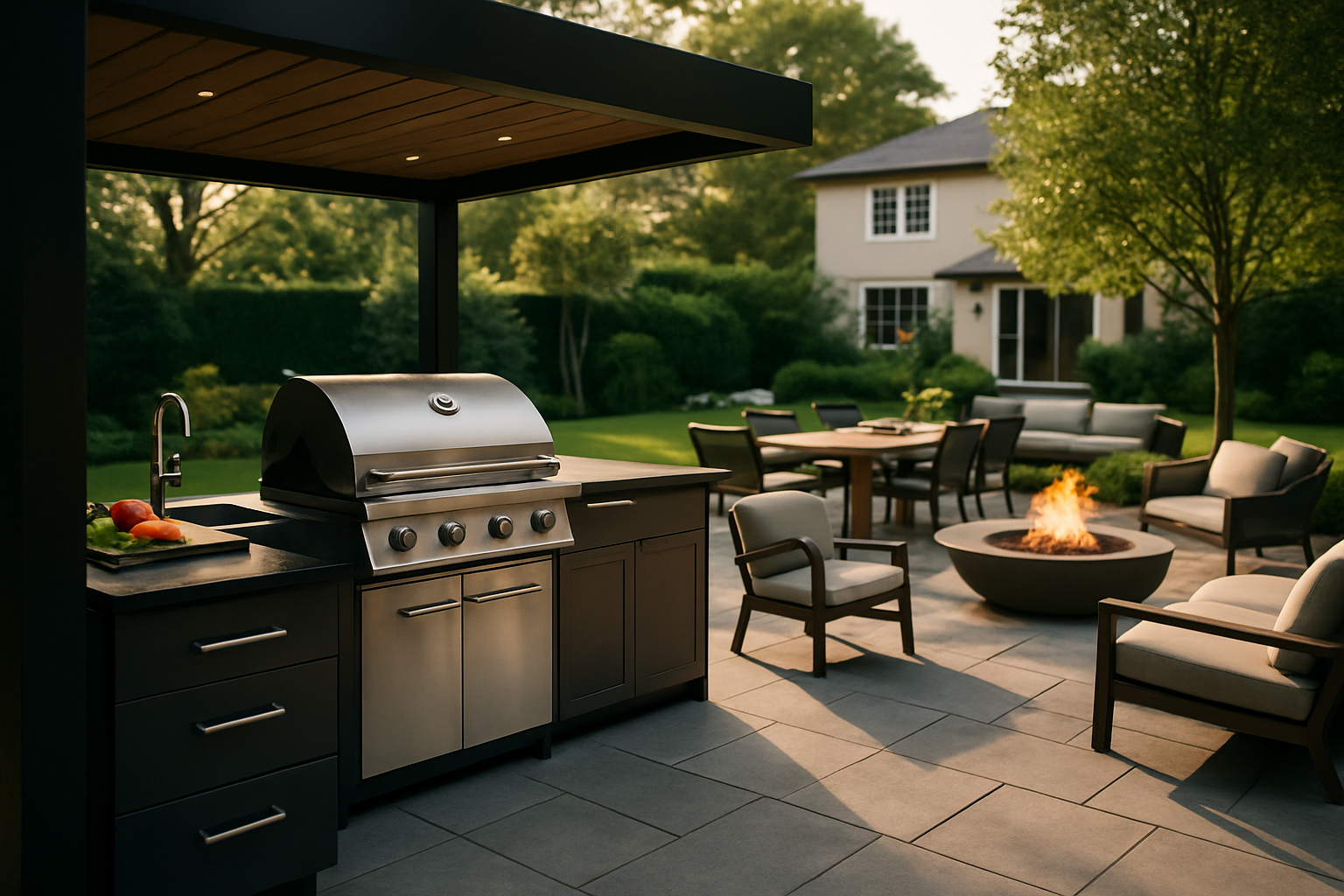What if your terrace became the coziest spot of winter 2025-2026?
Winter outdoor living has evolved dramatically, with homeowners increasingly seeking ways to extend their living spaces beyond traditional indoor boundaries. Covered terraces have emerged as a practical solution that allows year-round enjoyment of outdoor areas, even during Britain's challenging winter months. This architectural feature combines the comfort of indoor living with the fresh air and openness of outdoor spaces, creating a unique environment that bridges the gap between inside and outside living.

How Warm Covered Terraces Redefine Outdoor Living During Winter
The concept of winter outdoor living has transformed significantly with the integration of heating solutions and weatherproofing technologies. Modern covered terraces incorporate various heating elements, from infrared heaters to fire features, creating comfortable microclimates that remain usable throughout the colder months. These spaces often feature weather-resistant furniture, outdoor kitchens, and entertainment areas that function regardless of external conditions.
The structural design of contemporary covered terraces includes considerations for wind protection, rain coverage, and heat retention. Glass panels, retractable screens, and strategic positioning help create windbreaks whilst maintaining visual connection to the garden. Some designs incorporate heated flooring systems or radiant heating panels integrated into the ceiling structure, ensuring consistent warmth distribution throughout the space.
Why More Homeowners Choose Warm Covered Terraces for Winter Spaces
Property values and lifestyle preferences have shifted towards homes that offer versatile living spaces. Covered terraces provide additional usable square footage without the full investment of traditional home extensions. These spaces serve multiple functions throughout the year, from summer dining areas to winter reading nooks or home office alternatives.
The psychological benefits of maintaining connection to outdoor spaces during winter months cannot be understated. Natural light exposure and fresh air circulation, even in covered outdoor areas, contribute to improved wellbeing during darker winter periods. Many homeowners find that covered terraces provide a compromise between the desire for outdoor connection and the practical need for comfort during inclement weather.
The Lifestyle Shift Making Covered Terraces Essential Modern Features
Remote working patterns established in recent years have created demand for flexible living spaces that serve multiple purposes. Covered terraces often function as outdoor offices, providing separation from indoor family activities whilst maintaining comfort and weather protection. This versatility has made them increasingly valuable additions to modern homes.
Entertainment preferences have also evolved, with many households preferring intimate gatherings in unique settings. A well-designed covered terrace offers year-round entertaining space that feels special and distinct from indoor alternatives. The ability to host winter gatherings outdoors, complete with heating and weather protection, provides hosting opportunities that standard indoor spaces cannot replicate.
Design Elements That Maximise Winter Comfort
Successful winter-ready covered terraces incorporate several key design elements. Flooring materials such as composite decking, natural stone, or heated tiles provide both durability and comfort underfoot. Ceiling fans help circulate warm air, whilst strategic lighting creates ambiance and extends usable hours during shorter winter days.
Furniture selection plays a crucial role in year-round functionality. Weather-resistant materials such as powder-coated metals, treated woods, and all-weather fabrics ensure longevity and comfort across seasons. Built-in seating with weather-resistant cushions often provides more practical solutions than moveable furniture that requires seasonal storage.
Cost Considerations for Covered Terrace Projects
| Feature Category | Cost Range | Key Factors |
|---|---|---|
| Basic Covered Structure | £3,000-£8,000 | Size, materials, complexity |
| Heating Installation | £500-£3,000 | Type of heating, electrical requirements |
| Flooring Upgrade | £15-£80 per m² | Material choice, preparation needed |
| Lighting and Electrical | £800-£2,500 | Number of fixtures, wiring complexity |
Professional installation costs vary significantly based on structural requirements, local building regulations, and chosen materials. Planning permission may be required for larger structures or those attached to listed buildings, potentially adding time and cost to projects. Many homeowners find that phased installation approaches help manage costs whilst allowing gradual enhancement of the space.
Prices, rates, or cost estimates mentioned in this article are based on the latest available information but may change over time. Independent research is advised before making financial decisions.
Maintenance and Seasonal Preparation
Year-round use of covered terraces requires consideration of maintenance schedules and seasonal preparations. Regular cleaning of guttering, inspection of heating elements, and protection of furniture during extreme weather help ensure longevity and continued functionality. Many modern materials require minimal maintenance, but preventive care extends the lifespan of installations.
Seasonal adjustments such as installing temporary wind barriers or adjusting heating controls help optimise comfort and energy efficiency. Some homeowners invest in retractable elements that can be adjusted based on weather conditions, providing flexibility in how the space is configured throughout the year.
Covered terraces represent a significant evolution in how we conceptualise outdoor living spaces. By combining thoughtful design, appropriate heating solutions, and quality materials, these areas become genuine extensions of the home that remain functional and inviting throughout Britain’s varied climate conditions. The investment in creating such spaces often pays dividends in increased property value, enhanced lifestyle options, and improved wellbeing through maintained connection to outdoor environments year-round.




